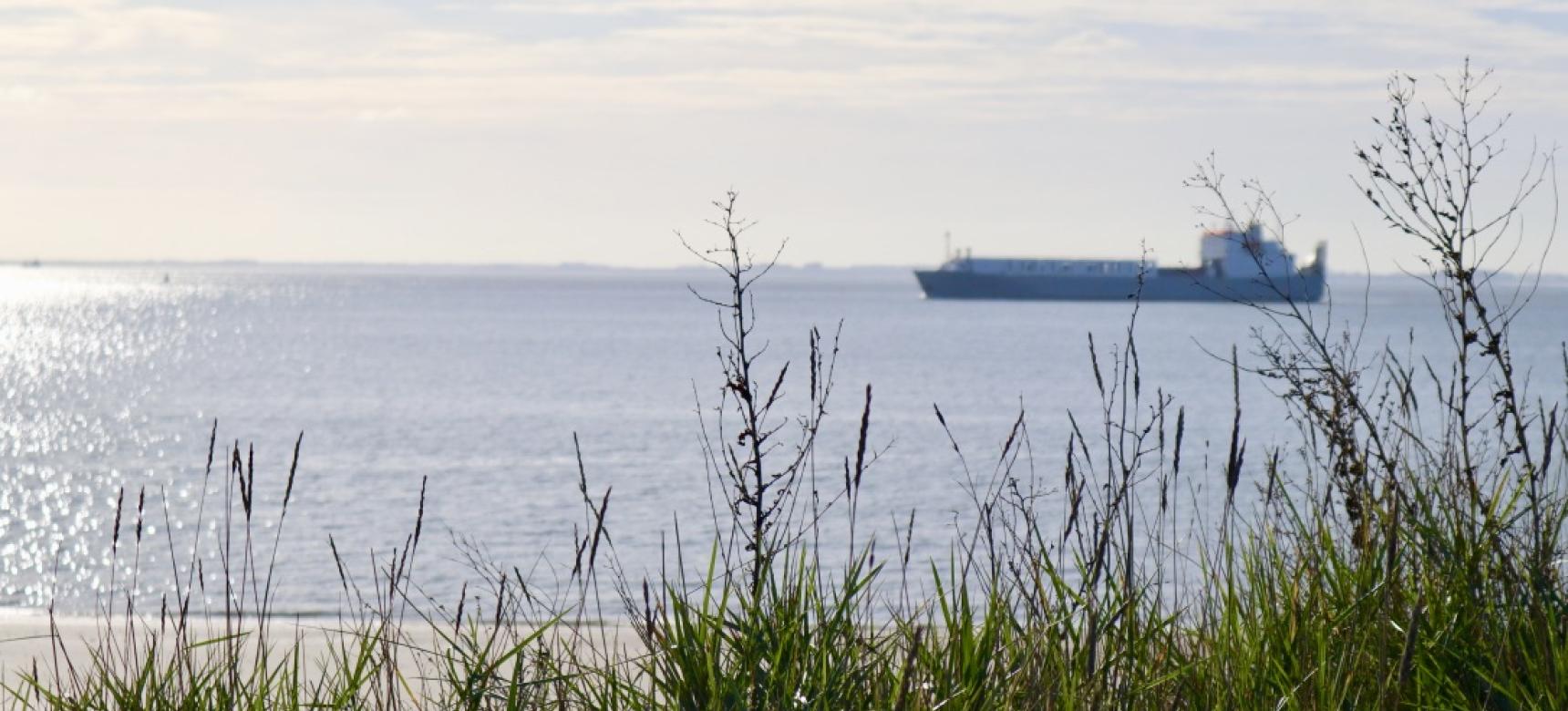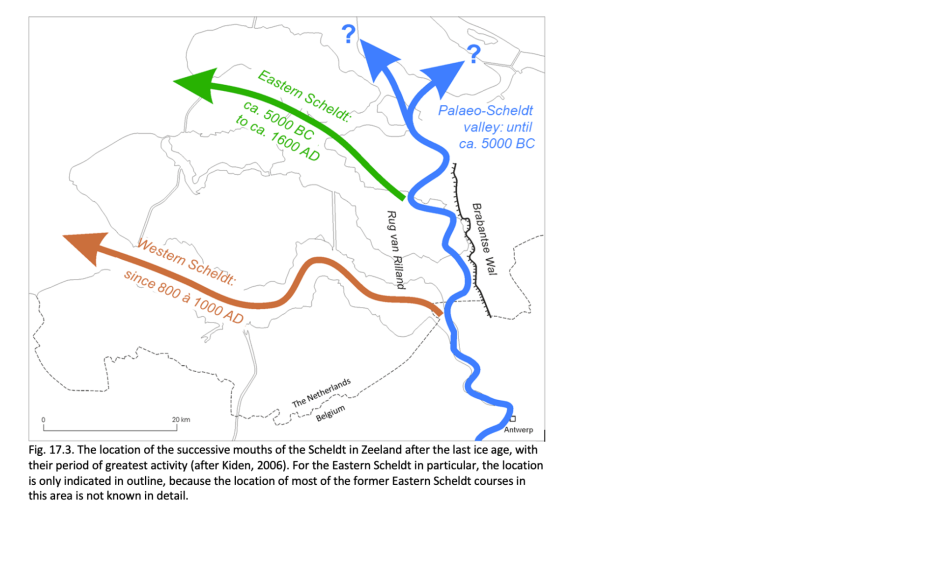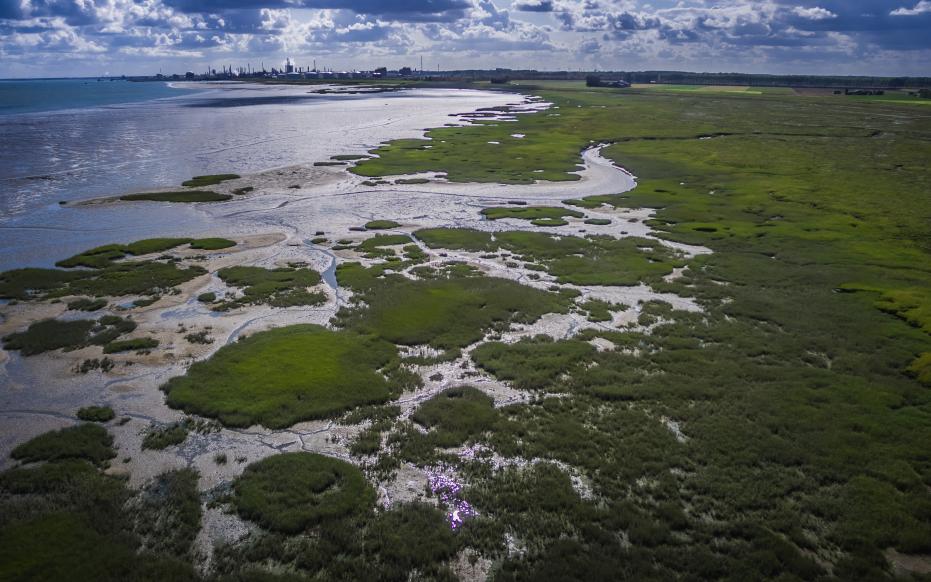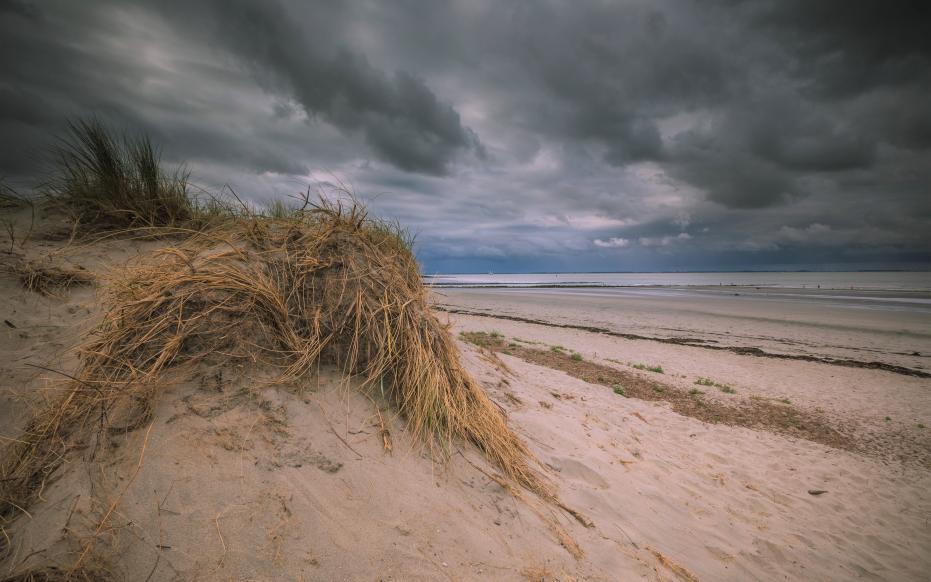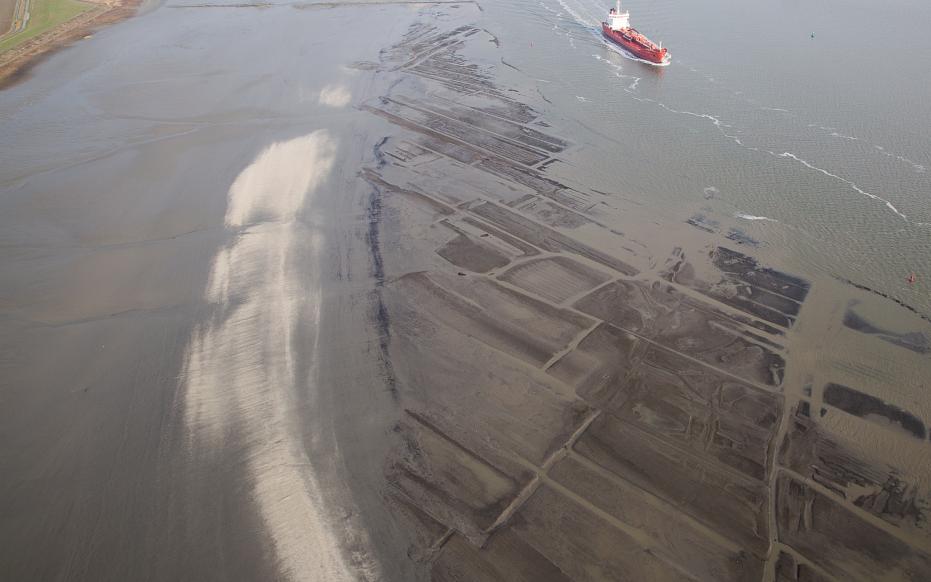Ontstaan van het landschap
Geologically speaking, the Western Scheldt formed the estuary of the Scheldt only very recently. About 7000 years ago, a tidal channel made contact with the Scheldt approximately at the site of today's Eastern Scheldt and thus became the new course of the Scheldt to the sea.
Around 3800 years ago, an almost continuous beach ridge had formed approximately at the site of the present coastline. A narrow opening at the site of today's Eastern Scheldt formed the mouth of the Scheldt. Breakthroughs also occurred at the site of today's Western Scheldt estuary and tidal channels penetrated deeper and deeper into the land. Exactly when the Western Scheldt was formed is not known, because historical sources and maps from that period are scarce, and because deposits from the early phase of the development of the Western Scheldt have all been cleared away by the widening and deepening of the estuary. The only thing that can be deduced with certainty from historical sources is that the Western Scheldt already existed in 1183 AD.
